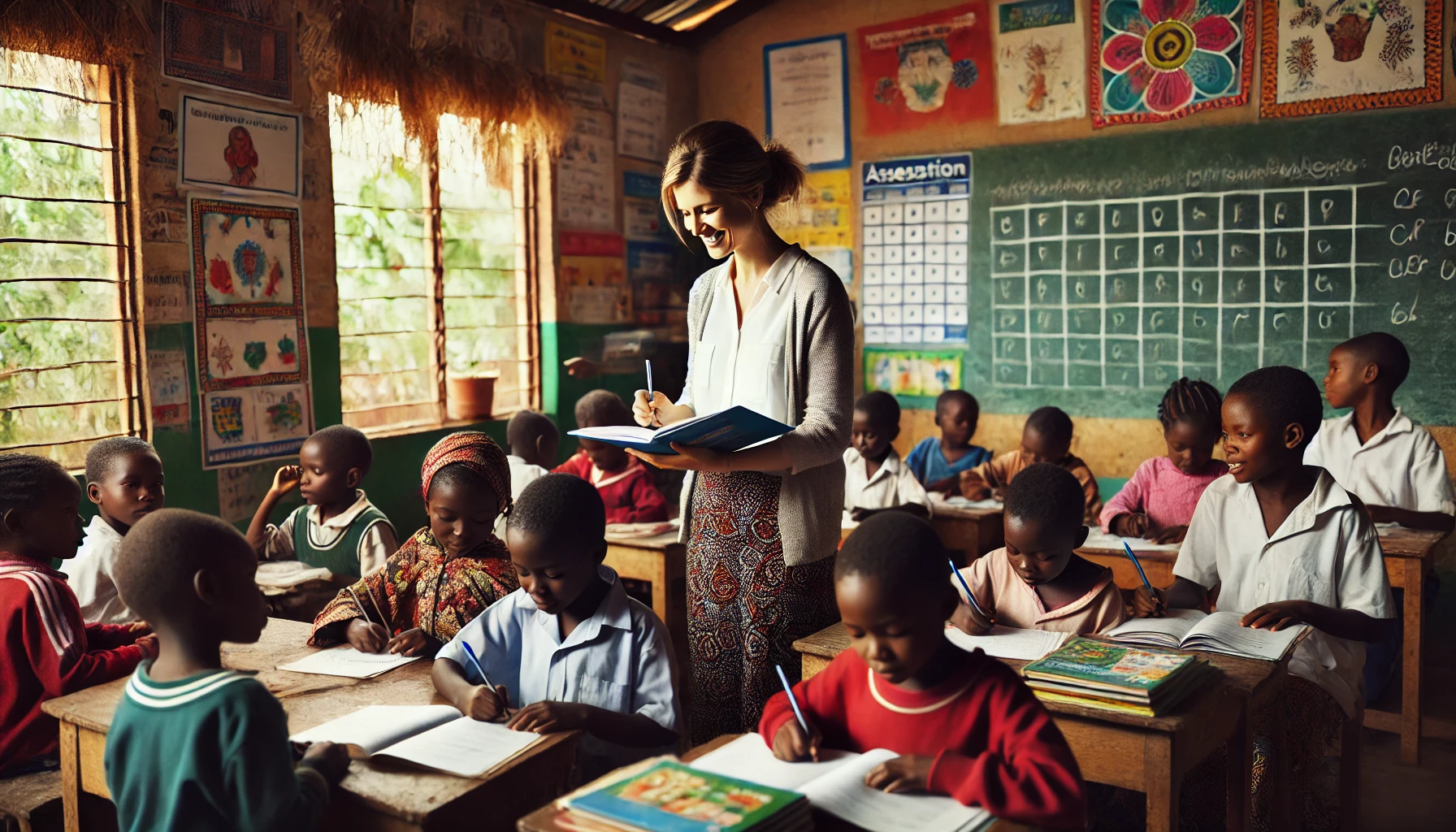Classroom Assessment as a Catalyst for Reducing Global Learning Poverty in Schools
The World Bank's report emphasizes classroom assessment as a vital tool to improve foundational literacy by guiding instruction, identifying learning gaps, and supporting inclusive, context-specific teaching. Empowering teachers with assessment skills and aligning tools with local curricula and languages are key to reducing global learning poverty.

The World Bank’s landmark report Classroom Assessment to Support Foundational Literacy offers a compelling response to the growing global education crisis, particularly in low- and middle-income countries. Backed by research from global institutions including UNESCO, UNICEF, RTI International, and the Brookings Institution, the report highlights an uncomfortable truth: millions of children around the world attend school without acquiring even the most basic literacy skills. This situation, worsened by pandemic-related school closures, threatens long-term economic and social development. The report argues that the key to reversing this trend lies in embedding well-designed classroom assessments into daily teaching practices and tools that empower teachers to understand where their students stand and to shape instruction accordingly. It positions classroom-based assessment not as an optional activity, but as the heartbeat of effective, inclusive, and equitable education.
Foundational Literacy: A Sequential Journey
The acquisition of literacy skills, the report explains, is a cumulative process that follows a well-documented developmental path. Children move through various phases pre-alphabetic, early alphabetic, late alphabetic, and full orthographic each representing increasingly complex language abilities. Effective classroom assessments must be designed to reflect this progression. Starting with oral language comprehension and awareness of print, learners gradually master phonemic awareness, word recognition, fluency, and reading comprehension. The report stresses that literacy learning is not a one-size-fits-all process, and assessments must account for students’ diverse starting points. Countries like New Zealand and Georgia have mapped literacy curricula to specific assessment tools and reading levels, enabling teachers to identify students’ progress and tailor instruction accordingly. This structured yet flexible approach ensures that children are not pushed forward before they have mastered foundational skills, which often results in gaps that widen with every school year.
Teachers at the Center of the Literacy Equation
Central to the report’s message is the critical role of teachers. High-quality classroom assessments are only as effective as the people using them. Unfortunately, teacher training programs in many countries pay little attention to assessment literacy leaving teachers underprepared to interpret data, provide feedback, or adjust instruction. The report calls for a comprehensive investment in teacher development, emphasizing the need for both theoretical understanding and hands-on practice. For example, in Ghana, updated National Teachers’ Standards have led to a more structured integration of assessment training into teacher education. In Finland, teacher training includes extensive coursework and classroom-based mentoring focused on formative assessment. Meanwhile, Sobral in Brazil has demonstrated how a coordinated effort combining monthly formative assessments, professional development, and curriculum-aligned lesson plans can significantly improve early grade reading outcomes.
Classroom Assessments Must Reflect Local Realities
One of the report’s strongest arguments is for the contextualization of assessment tools. While international tools like EGRA, MELQO, IDELA, and ASER offer solid frameworks, they must be adapted to local languages, cultures, and learning environments to produce meaningful insights. The report points to Peru and Ethiopia as examples where multilingual and intercultural policies have resulted in the production of classroom materials, including assessments, in students’ first languages (L1). This linguistic grounding has been shown to enhance reading outcomes and even support the transition to second-language learning (L2). Furthermore, in South Africa, results from assessments in Nguni languages have helped shape national language of instruction policies. The report emphasizes that assessments should never be simply imported they must be culturally and linguistically sensitive, developed in consultation with local educators, and aligned to the curriculum being taught.
Harnessing Technology for Smarter, Faster Feedback
Technology, when thoughtfully integrated, can make classroom assessments more efficient, responsive, and personalized. The report showcases several technology-based initiatives that have transformed how teachers assess and support learning. In Pakistan’s Sindh province, a tablet-based formative assessment tool allowed teachers to assess students’ reading skills and receive instant feedback, along with suggested next steps for instruction. Similarly, the Tangerine Teach platform in Kenya provided a user-friendly interface for tracking reading development in real-time. In Cambodia, the SmartBooks app turned traditional textbooks into interactive e-books, allowing children to learn and be assessed through digital games and stories. These interventions not only reduced the administrative burden on teachers but also gave them access to timely, actionable data helping to individualize instruction in classrooms that often have limited resources and high student-teacher ratios.
Inclusive Assessment: Reaching Every Learner
Inclusion remains a critical component of any equitable education system, and the report makes a strong case for classroom assessments that accommodate the needs of all learners. Using principles from Universal Design for Learning (UDL), assessments must be made accessible to students with disabilities through appropriate accommodations. Morocco’s adaptation of EGRA for deaf students using Moroccan Sign Language serves as a model for inclusive assessment practices. The initiative involved adapting the content, extending assessment time, and training assessors in sign language resulting in a more equitable and informative evaluation process. The report recommends that similar efforts be made globally to ensure all students, regardless of ability, can demonstrate their learning and receive appropriate support.
The World Bank’s report underscores the transformative power of classroom assessment in foundational literacy. By anchoring assessments to curriculum goals, training teachers to use them effectively, adapting tools to local contexts, leveraging technology, and ensuring inclusivity, education systems can dramatically improve learning outcomes. These efforts are essential to meeting the global goal of halving learning poverty by 2030 and ensuring that every child, everywhere, learns to read, and reads to learn.
- FIRST PUBLISHED IN:
- Devdiscourse
ALSO READ
Tensions Rise as SDF Integration Deadline Looms: Turkey's Patience Wanes
Krishnaguru University Integrates Spirituality and Academia at First Convocation
WHO–Ayush Initiative Advances Global Integration of Traditional Medicine Systems
Satcom Integration Poised to Revolutionize Indian Agriculture
The Politicization of ESOL: A Battle for Integration and Community










